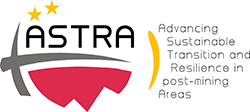Adamów Coal Mine
52º 0' 38'' N 18º 37' 53'' E
North-East
Poland
Description
The Adamów brown coal mine was a large open-pit mine in Turek, Greater Poland Voivodeship, central Poland, 208 km west of the capital, Warsaw. In August 2020 the management announced that the mine will be closed by the end of the year. Because there was still some coal left, the management decided to continue operations and the last excavator was permanently turned off at 4:50 pm on 17 February 2021. There are plans to install a photovoltaic array on the site.
Extracted Materials
At the time of its commissioning Adamów held one of the largest lignite reserves in Poland, estimated to be 90 million tonnes of coal. The annual coal production was around 1.6 million tonnes.
Antropological info
There are many reasons for a such of conflict and several reasons have been advanced as to the causes for these conflicts and are based on structural controls of different governments.
Sociologal info
At the European energy policy level, the role of citizens are being given increasing prominence, with a visible shift to the term ‘citizens’ in preference or in addition to the term ‘consumers’ when it comes to energy. This can be seen explicitly in a number of high level strategy documents, such as the Clean Planet for all communication13 which proposes that: “Climate change can only be tackled if people actively engage, as consumers and as citizens.” The newly launched European Green Deal adds the idea of co-design of policy directions, reflecting that “Recent political events show that game changing policies only work if citizens are fully involved in designing them.
Archaeological info
The solar facility will span an area of 100 hectares. It is expected to be the largest such farm in Poland, producing 70 MWp of power, 18.5 times more than the current largest plant in Czernikowo, near the northern city of Toruń, which produces 3.77 MW.
The project is the result of a 160 million zloty (€35 million) deal between Zespół Elektrowni Pątnów-Adamów-Konin (ZE PAK), a consortium of power plants that run on brown coal, and ESOLEO, a provider of photovoltaic installations.cZE PAK is involved in the mining of lignite coal, and energy generation and distribution primarily based on lignite-fuelled power plants.
Sustainable tourism insights
Post-exploitation opencast pits constitute a final stage of mining activities and turning them into public utility facilities is taking place now by their water reclamation. They constitute basins without outflows with the depth of 15 to 69 m and areas ranging from 2.5 to 692 ha. The bottoms of these basins are situated in pyrite-containing Miocene formations.
Environment sustainability
The study presents a management model for post-mining areas, which includes the process of reclamation and management in the context of the socio-ecological system. This means that it is necessary to include the relations in the management system that occur between the main stakeholders (internal relations) and the ecological, economic and socio-cultural conditions of the environment (external relations).









